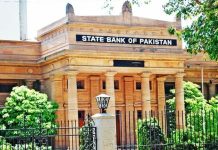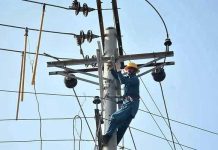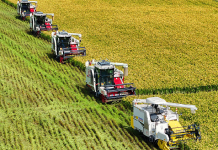ISLAMABAD: Climate in certain areas of Pakistan is suitable for bamboo cultivation, and this sector can become a significant source of poverty reduction and economic growth if given proper attention by the government.
“If the government supports bamboo production and business, it can play an important part in poverty reduction,” said Athar Shah, Chief Director of the Forests, Wildlife, and Fisheries Department, while talking to WealthPK.
Bamboo is a multipurpose forest product that plays an important part in both industrial and residential economies around the world.
It has been used for shelter and daily necessities, particularly by the indigenous people. It is known as the “poor man’s timber,” the “green gold of the forest,” and the “people’s friend.” It is used as a food, fodder, principal construction material, and for a wide range of functional things ranging from kitchen equipment to dinnerware in various regions of the world.
In China and several BRI (Belt and Road Initiative) countries, the bamboo and rattan sector is regarded as an important approach to poverty alleviation. The Pakistani national flag was raised in front of the International Network for Bamboo and Rattan (INBAR) headquarters on November 20, 2021.
Athar Shah said bamboo is grown in more than 85 locations in Pakistan in Narowal district, including the villages of Thillay Kalan, Wazirpur, Kandhala, and Porokey. Kasur, Sheikhupura, Gujranwala, Mandi Bahauddin, and Sargodha are among the districts in Punjab province where it is grown. On one acre of land, 3,000 to 5,000 bamboos are produced.
Bamboo grows and regenerates quickly, with physical qualities comparable to or greater than those of wood. Wood takes years to develop, while bamboo takes only a few months to grow. As a result, farmers may make more money farming bamboo than they do growing wood. Bamboo may be used in more ways than other trees, including the roots, stems, and leaves. Its fibers can be converted into new sheets for infrastructure in addition to being used as handicraft materials and building materials to replace plastic, wood, and steel.
Bamboo was once only grown in particular areas, such as sandy areas, but now it is grown with the same care as other crops to produce the highest potential yield. “In Pakistan, three natural bamboo species are grown: dendrocalamus strictus, arundinaria falcata, and bambusa bamboo,” he said.
Athar said that the bamboo plantation thrives in hot to warm temperate climatic conditions. In summer, however, it is important to remember that a temperature of fewer than 15 degrees Celsius is not required.
“As bamboo has weak roots, it has to be protected from severe winds. Furthermore, a place with cold winds is unsuitable for bamboo farming because the winds damage the tips of the bamboo leaves,” he said.
Bamboos are usually grown through cuttings or rhizomes from the culms. They can, however, be propagated through extremely rare seeds. Bamboo seedlings are cultivated in nursery beds and then left to grow in poly pots for a year or more. The seedling is then transplanted to the main field. A little attention is required when using the rhizome planting method. In this case, one-year culms with roots should be dug and chopped into one-meter lengths before being planted during the rainy season.






